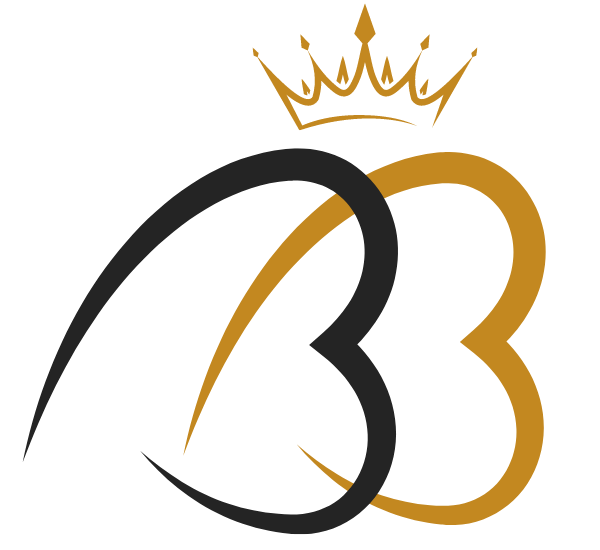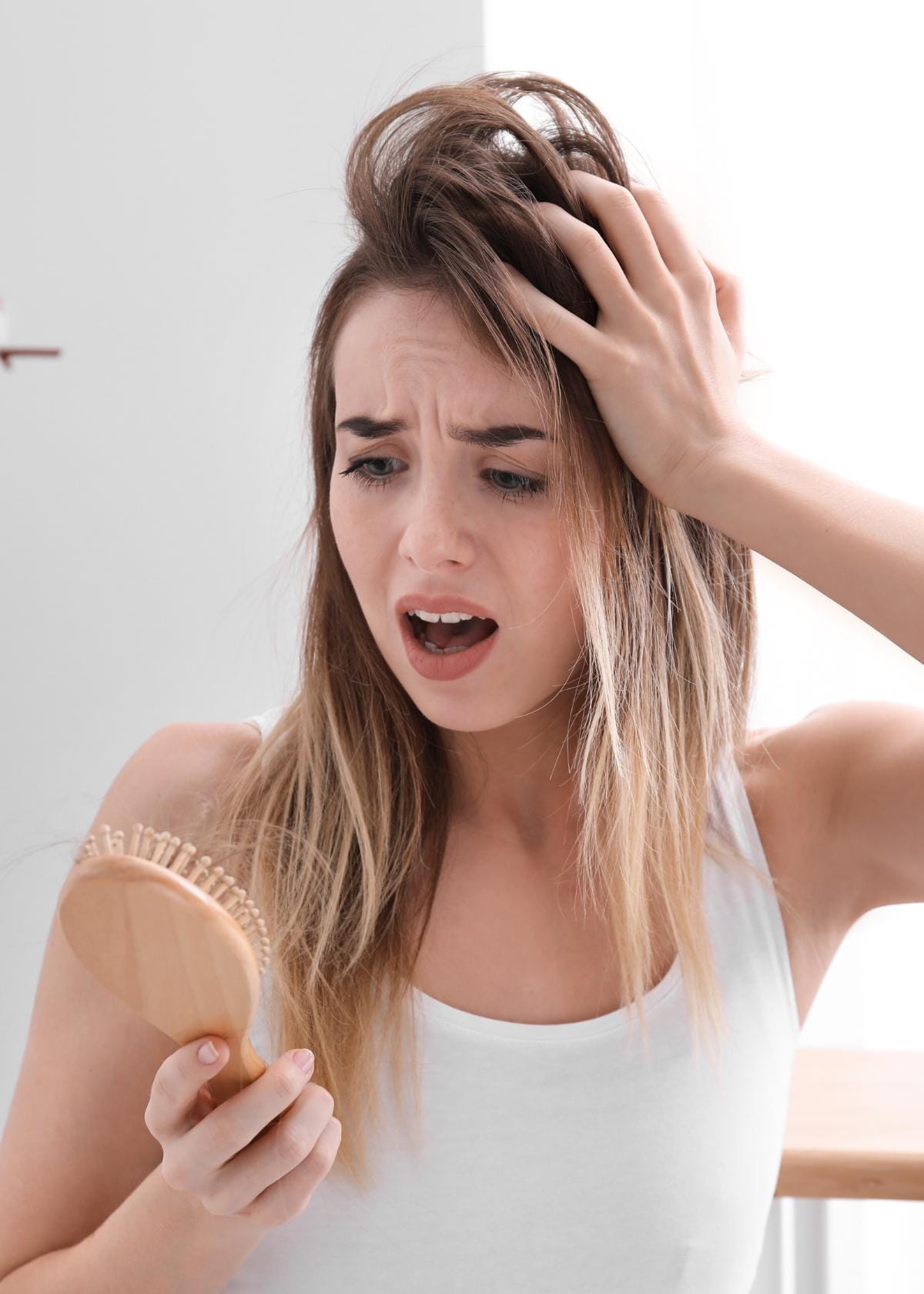Are you worried that thinning your hair could lead to damage? It's a legitimate concern, as improper use of thinning shears or razors can indeed harm your hair.
In this article, we will provide an in-depth look at the potential risks and benefits of this hairstyling method, along with tips on how to minimize any possible negative impacts.
Stay tuned if you want healthy hair while also achieving the desired volume and texture.
Potential Damage from Thinning Shears and Razors

Hair thinning scissors and razors can potentially cause damage to your hair by increasing the risk of split ends, weakening the hair strands, and creating an uneven texture.
Increased Risk of Split Ends
Thinning your hair with shears or razors can heighten the threat of split ends. This is because these tools cut hair strands at various lengths, creating a mix of short and long hair.
The shorter ones lack the weight needed to combat natural frizz, causing them to stand out in different directions. As a result, they rub against each other more often, leading to friction damage which eventually turns into split ends.
Incorrect use of thinning scissors and razors only compounds this problem making even healthy hair prone to splitting on the surface and edges.
It's, therefore, crucial that professionals handle these tools as an inexperienced person might not fully understand their potential impact on hair health over time.
Moreover, if you have decided to go for hair thinning, then make sure to use a reputable thinning shampoo for your hair care.
Weakened Hair Strands
Thinning shears and razors can lead to weakened hair strands if not used correctly. These tools are designed to remove excess bulk from the hair, but when used improperly, they can cause damage.
When thinning shears or razors are used incorrectly, they can cut into the hair shafts, causing them to become weak and more prone to breakage. This can result in frizzy and damaged-looking hair.
It's important to have an experienced stylist who knows how to use these tools properly in order to avoid weakening the strands of your hair. Although thinning shears are great but choose thinning scissors for your naturally wavy hair is important as well.
Potential for Uneven Texture
Thinning your hair using shears or razors can potentially result in an uneven texture. This is because the process of thinning removes some hair strands while leaving others untouched, creating an imbalance in thickness.
When done incorrectly or excessively, it can lead to clumps of thick and thin areas throughout your hair. It's important to be cautious when thinning out your hair to ensure a more uniform and natural-looking appearance.
Pros and Cons of Thinning Out Your Hair

Thinning out your hair can have both pros and cons. On the positive side, thinning can help control volume, reduce flatness, and blend layers for a more balanced hairstyle.
However, it's important to consider that thinning may result in frizzy hair and potential damage to curly hair types.
Pro: Control Volume
Thinning out your hair can offer the benefit of controlling volume. By using thinning shears or razors, you can remove excess bulk and create a more balanced look. Thinning helps to redistribute the weight of your hair, making it easier to style and manage.
Whether you have thick hair that tends to be heavy or want to add texture and movement to fine hair, thinning can help achieve the desired volume while maintaining a natural appearance.
It's important, however, to ensure that thinning is done by an experienced stylist using the proper technique to avoid any potential damage.
Pro: Reduce Flatness
Thinning out your hair can be a great way to reduce flatness and add more volume to your style. By strategically removing some of the bulk, you can achieve a lighter and more textured look that adds movement and body to your hair.
Thinning shears or razors can help create layers within the hair, giving it a natural lift without compromising its overall length. This technique is especially beneficial for those with thicker or heavier hair types that tend to appear flat or weighed down.
So, if you're looking for a way to bring life back into your hairstyle and add some much-needed bounce, thinning out your hair could be a perfect solution!
Pro: Blend Layers
Blending layers is a major advantage of thinning out your hair. This technique helps create a seamless transition between different lengths, giving your hairstyle a more polished and professional look.
By removing some bulk from thicker sections, thinning shears can help achieve a more even distribution of volume throughout your hair. This makes it easier to style and manage while maintaining the desired shape and structure.
Whether you have long or short hair, blending layers with thinning shears can add depth and texture to your overall look, enhancing the natural movement of your locks for a stylish appearance.
Con: Frizzy Hair
Thinning out your hair can lead to a potential downside: frizzy hair. When you use thinning shears or razors, it can disrupt the natural texture of your hair, causing it to become frizzy and unruly.
This is particularly true for those with curly or wavy hair types, as thinning can disrupt the curl pattern and create unwanted frizz. It's important to consider this before deciding to thin out your hair, especially if you already struggle with managing frizz.
Con: Potential Damage to Curly Hair
Thinning out curly hair can potentially lead to damage. Curly hair is naturally more prone to frizz and dryness, and using thinning shears or razors can exacerbate these issues.
The uneven texture created by thinning can disrupt the natural curl pattern and cause the hair to become even more frizzy.
Additionally, curly hair tends to be drier due to its structure, so any kind of cutting technique that removes bulk can further strip away moisture, resulting in increased dryness and brittleness.
It's important for those with curly hair considering thinning techniques to weigh the potential damage against the desired outcome and consult with an experienced stylist who understands how to work with curls without causing harm.
Preventing and Minimizing Damage

To prevent and minimize damage when thinning your hair, it is important to use proper technique and receive training from a skilled stylist. Limiting the frequency of thinning, using conditioning treatments, and getting regular trims can also help maintain the health of your hair.
Proper Technique and Training
Thinning your hair requires proper technique and training to minimize damage. This includes:
- Learning the correct way to hold and use thinning shears or razors. These are great for blending thick hair but with proper technique.
- Understanding the angle and depth of each cut to prevent excessive thinning.
- Being knowledgeable about different hair types and textures to tailor the thinning technique accordingly.
- Seeking guidance from an experienced stylist who can provide expert advice on how to safely thin out your hair.
- Regularly practicing and refining your technique to ensure precision and avoid unintended harm.
Limiting Frequency of Thinning
Thinning your hair too frequently can lead to damage in the long run. Overusing thinning shears or razors can weaken the strands of your hair and increase the risk of split ends. It's important to give your hair time to recover between thinning sessions to prevent further damage.
By limiting the frequency of thinning, you can help maintain the health and integrity of your thin hair.
Using Conditioning Treatments
Conditioning treatments can play a crucial role in preventing and minimizing damage from thinning hair. These treatments help to hydrate and nourish the hair, making it stronger and more resistant to breakage.
Regular use of deep conditioning masks or leave-in conditioners can help restore moisture and improve the overall health of the hair. By keeping your dry hair well-conditioned, you can reduce frizz, add shine, and promote manageability.
It's important to note that using a conditioning treatment alone may not fully prevent damage caused by improper thinning techniques or excessive use of thinning shears.
Regular Trims
Regular trims are crucial for maintaining the health and appearance of your hair. By scheduling routine trims, you can prevent split ends from traveling up the hair shaft and causing further damage.
This is especially important if you use thinning shears regularly, as they can increase the risk of split ends. Additionally, regular trims help to maintain a neat and polished look by keeping your hair length consistent.
By removing any damaged or dry ends, your hair will appear healthier and more vibrant overall. Remember, even if you're trying to grow out your hair or achieve a specific style, getting regular trims is still necessary to keep your strands strong and healthy.
Proper maintenance through regular trims also helps in preventing weakened hair strands. Removing dead or damaged ends ensures that only healthy strands remain on your head, reducing breakage and promoting stronger growth from the roots.
With each trim session, you'll be giving your locks a chance to flourish by eliminating any weak points along the way.
Other Factors to Consider

Factors such as hair type, texture, and the expertise of the stylist should also be taken into account.
Hair Type and Texture
Understanding your hair type and texture is essential when considering thinning out your hair. Different hair types and textures will react differently to thinning shears or razors, which can impact the overall outcome of the haircut.
Coarse or thick hair, for example, may require more aggressive thinning to achieve the desired result, while fine or fragile hair may need a lighter touch to avoid damage. Additionally, curly or wavy hair can be more prone to frizz if not properly thinned out.
It's important to consider these factors and consult with an experienced stylist who understands how your specific hair type and texture will respond to thinning techniques.
Condition of Hair
The condition of your hair is a crucial factor to consider when it comes to thinning. If your hair thinned is already damaged or prone to dryness, thinning with shears or razors can worsen the situation.
Damaged hair is more susceptible to breakage and split ends, which can be further exacerbated by the use of thinning tools. Additionally, if you have brittle or weak strands, thinning may cause them to become even more fragile.
It's important to assess the state of your hair before deciding whether or not thinning is a suitable option for you.
Stylist's Expertise
An experienced stylist's expertise is crucial when it comes to thinning out your hair. They have the knowledge and training to use thinning shears or razors correctly, minimizing the risk of damage.
A skilled stylist understands how much hair needs to be thinned and can create a balanced, natural-looking result. By choosing an experienced professional, you can ensure that your hair is in safe hands and avoid the potential pitfalls of thinning done by an inexperienced stylist.
Frequently Asked Questions
These FAQs will provide some insight into the main causes of hair thinning, whether techniques like thinning do lead to further hair damage, and tips for keeping your hair as healthy as possible.
Read on for answers to frequently asked questions about thinning hair and how to care for it properly.
Does thinning your hair damage it?
Thinning your hair can potentially cause damage if done improperly or excessively, as it can weaken the hair follicles and lead to breakage. You need to protect your exposed hair tips of your straight hair.
What methods are commonly used for thinning hair?
Common hair thinning techniques include using thinning scissors, razor cutting, and texturizing techniques to reduce bulk and create a more even appearance.
Will thinning my hair make it grow back thicker?
No, thinning your hair does not make it grow back thicker. Hair thickness is determined by individual genetics and cannot be changed through thinning techniques.
Can I safely thin my own hair at home?
It is generally recommended to have a professional hairstylist perform the thinning process, as they have the necessary skills and knowledge to do it safely without causing excessive damage. Overall, thinning shears ruin your wet hair.
Conclusion
Thinning your hair can potentially cause damage if not done correctly. Thinning shears and razors, if used improperly, can lead to split ends, weakened strands, and uneven texture.
It is important to consider the risks before thinning out your hair and ensure you have an experienced stylist who knows how to use these tools properly.



